代码结构
uml类图
关于animation
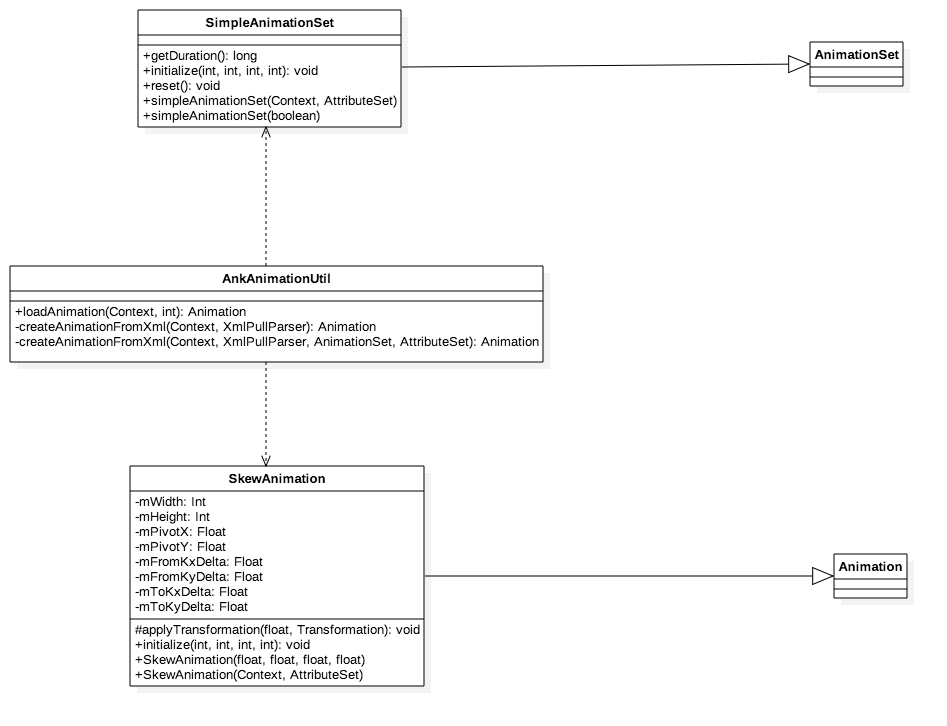
关于animator
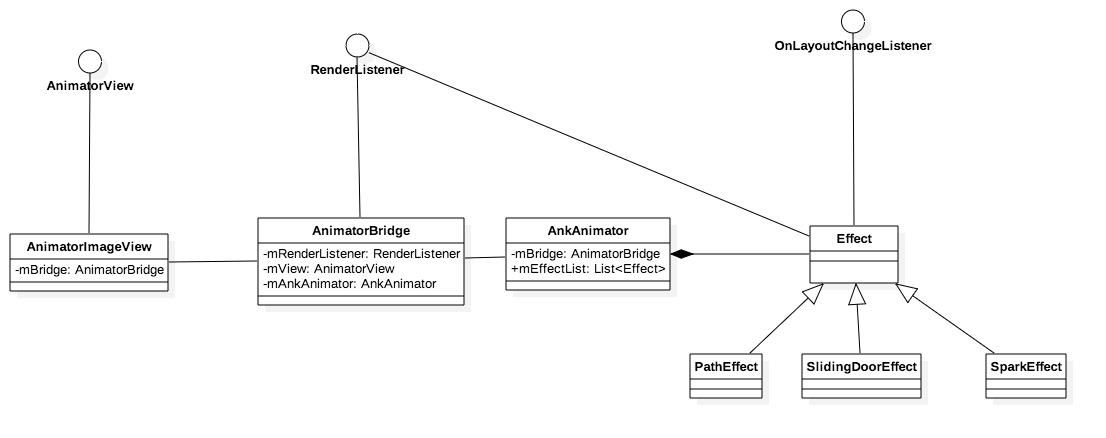
设计思想
Animation
创建流程
1.AnimationUtils的加载流程
序列图
package android.view.animation;
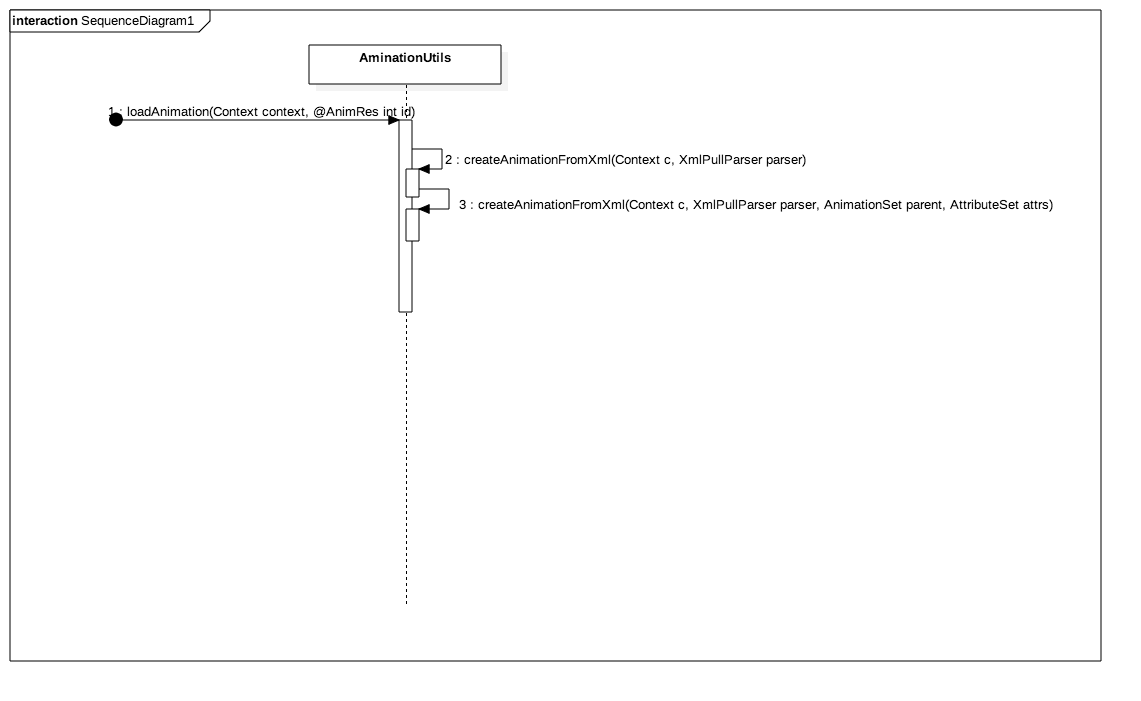
AnimationUtil:ceateAminationFromXml
1 | private static Animation createAnimationFromXml(Context c, XmlPullParser parser, |
2.layout的加载流程
序列图
关键词:递归,解耦
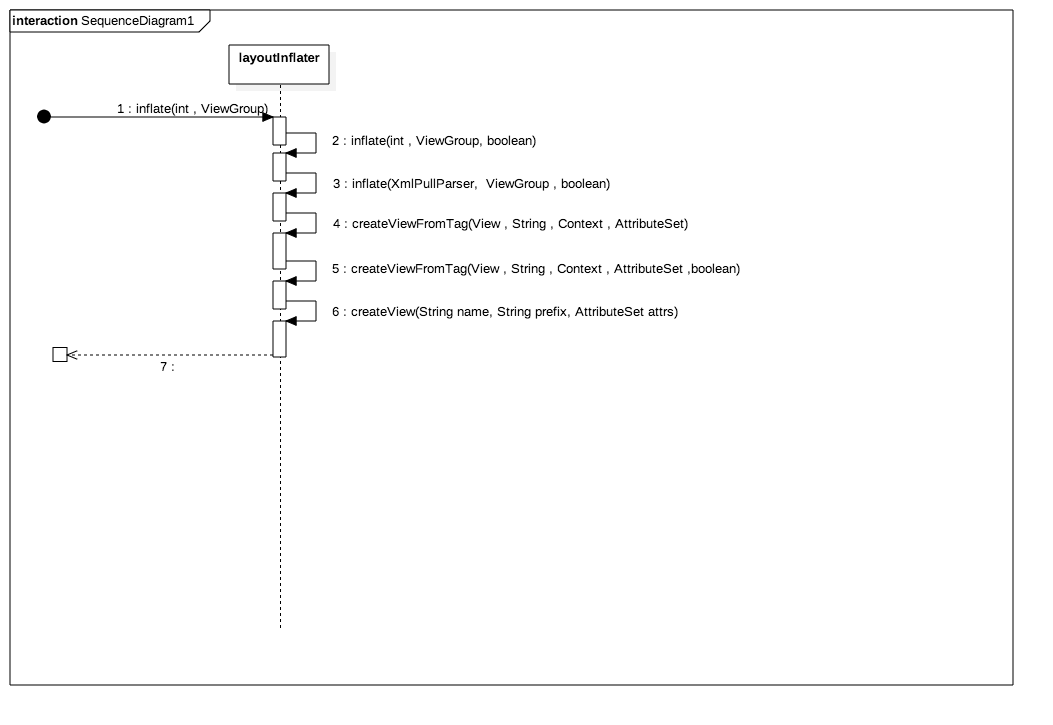
LayoutInflater:createView()
1 | /** |
3.其他找资源
Drawable,Dimens,String,Assert……………..见[TODO 20170729]
调用流程
1.animation
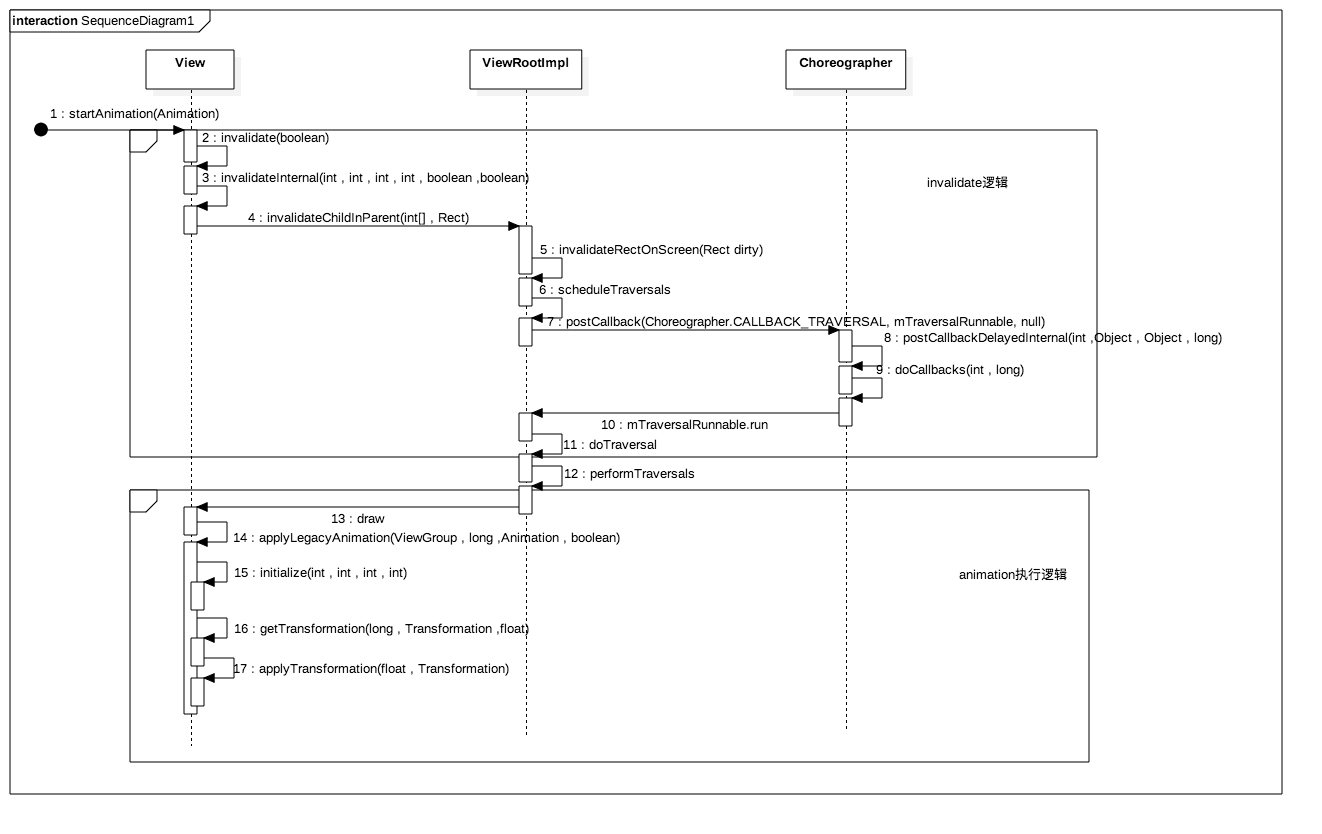
attachInfo的生成流程 见[TODO 20170730]
2.View:getTransformation()
1 | /** |
Animator
调用流程
1.animator
create
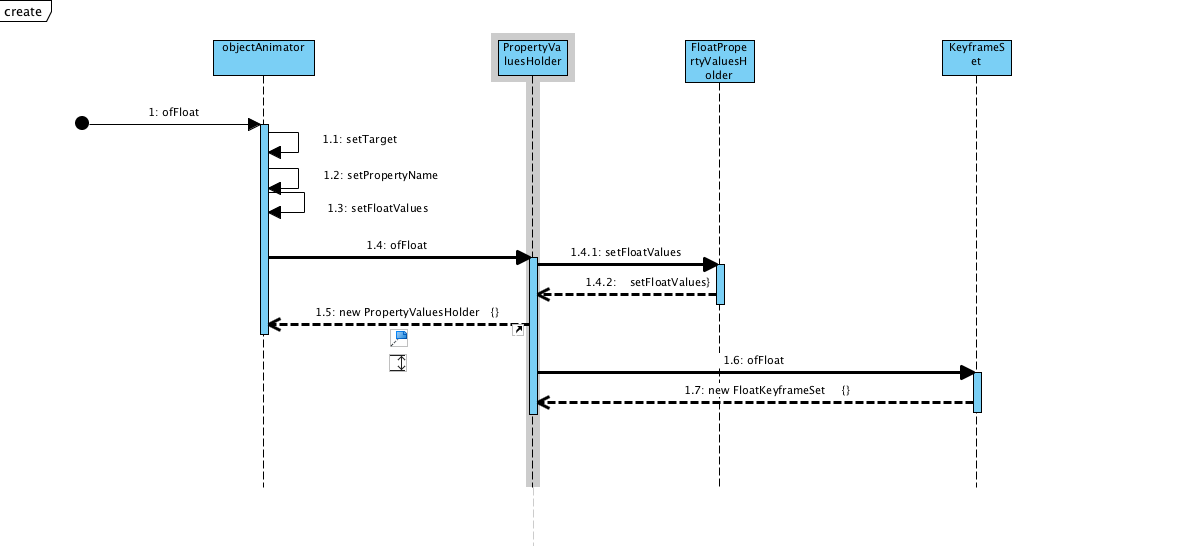
start
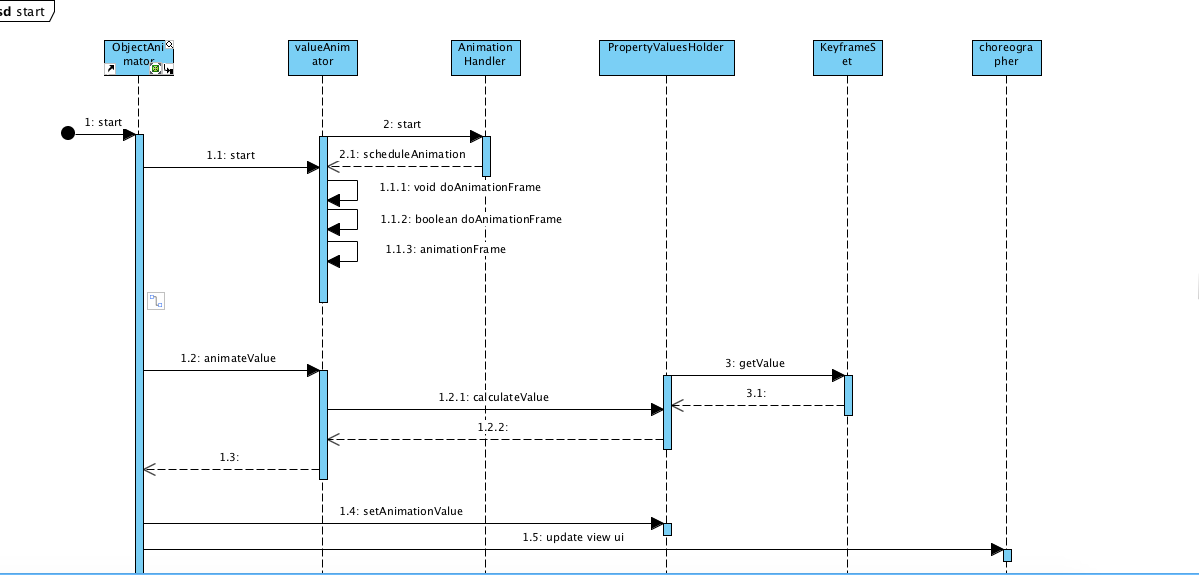
TODO
TODO [20170812 http://blog.csdn.net/github_35180164/article/details/51814279]
其他资源 Drawable,Dimens,String,Assert……………..见[TODO 20170729]
attachInfo的生成流程 见[TODO 20170730]